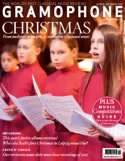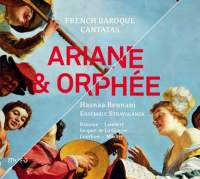Texte paru dans: / Appeared in: |
|
|
Outil de traduction (Très approximatif) |
|
|
Reviewer: Julie Anne Sadie
Rameau’s Orphée (1721) is a cantata for tenor but is sung here by the mellifluous, French-trained Moroccan soprano Hasnaa Bennani, an artistic decision that will have involved some adjustment of the relationship of the voice and concertante instruments (violin and bass viol). Orpheus’s central air gracieux (tr 4) is accompanied by Baroque guitar and viol, presumably to evoke his lyre.
Lambert, a singer and lutenist patronised by the Précieux, and later the collaborator and father-in-law of Lully, published in 1689 a collection of 60 accompanied airs de cour, including the Orphic Ombre de mon amant. Lambert himself would have sung it, no doubt infusing it with his exceptional command of poetic declamation.
Jacquet de la Guerre, herself a formidable composer of cantatas, provides the first instrumental work, which for Gilon and Soltani reflects in turn the sleep of Orpheus (tr 13) and the fury of Ariadne (tr 14): the D minor violin sonata from her 1707 collection, which the composer also intended to be performed by harpsichord alone. To accompany the violin and concertante viol, Ensemble Stravaganza add theorbo or guitar and harpsichord, which, regrettably, often threaten the ensemble balance. Nevertheless, Gilon leads with authority and panache, treating the slow movements as frameworks on which to improvise lavish ornamentation, and the whole as an instrumental cantata.
They continue with the cantata Ariane from Courbois’s 1710 collection – which incidentally also includes an Orphée. A pair of flutes, accompanied by bass viol and theorbo, provide a lilting ritournelle in the first air, though elsewhere it is violin that in this arrangement provides the fireworks in the vengeance aria (tr 18) and gentle pathos of the final air tendrement.
In the final track, Marais’s extended D major Chaconne, Gilon and Soltani treat the three-voice work as a blueprint for an exploration all the possible instrumental combinations to hand, and in doing so seek to enhance the dramatic potential of the work. Entertaining, if dizzying.
|
|
|
|
|
|
Cliquez l'un ou l'autre
bouton pour découvrir bien d'autres critiques de CD |
|




